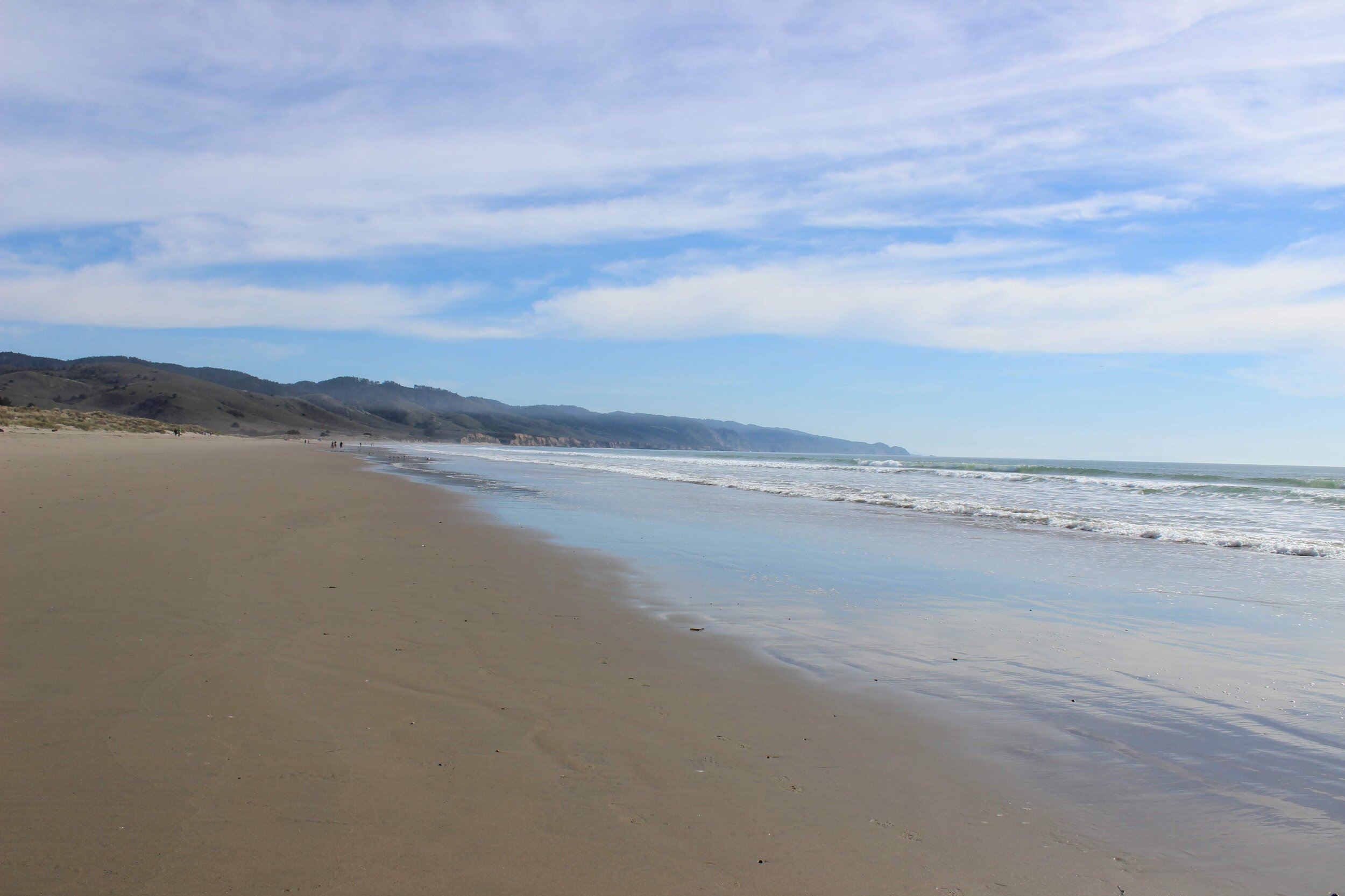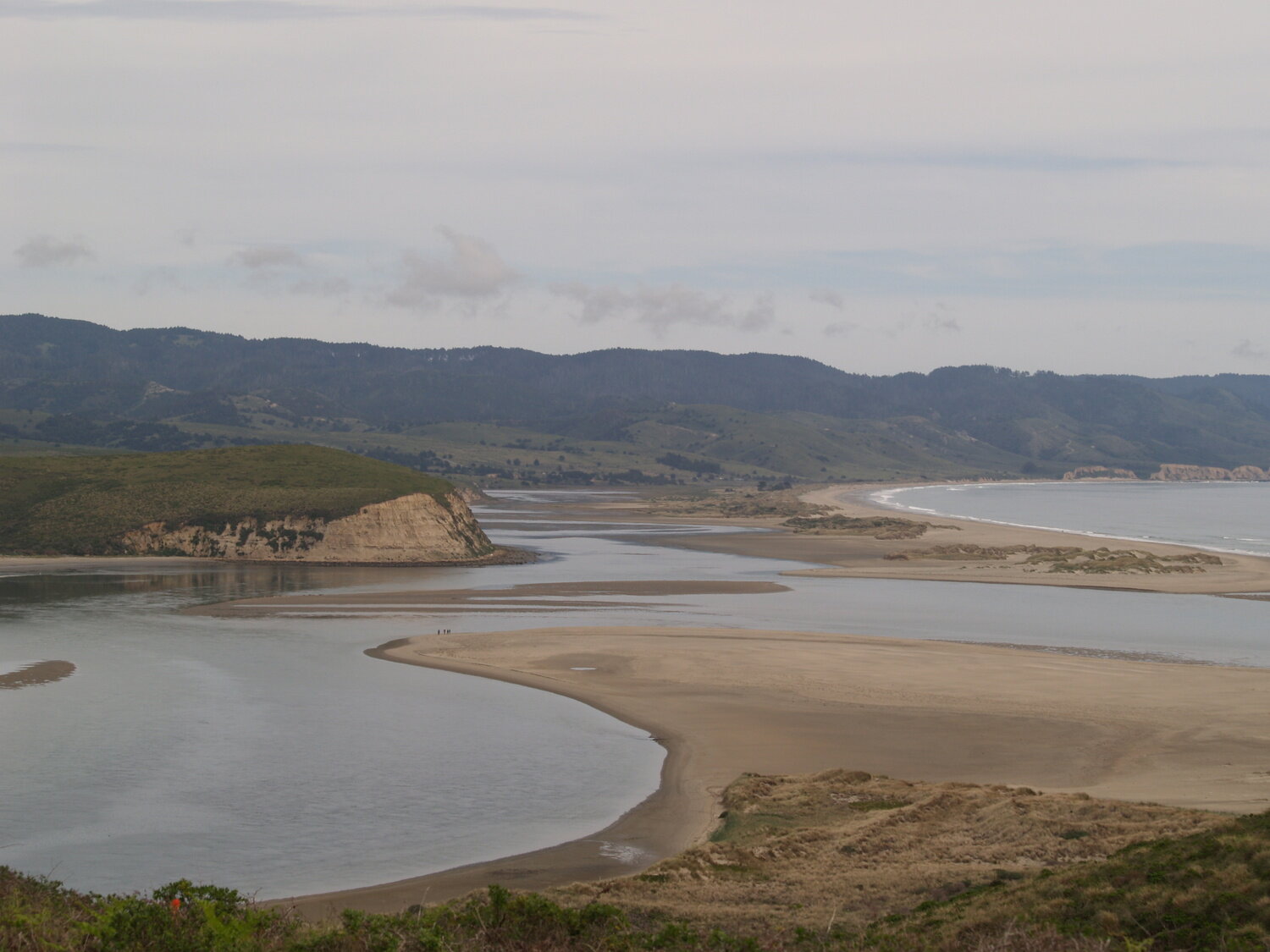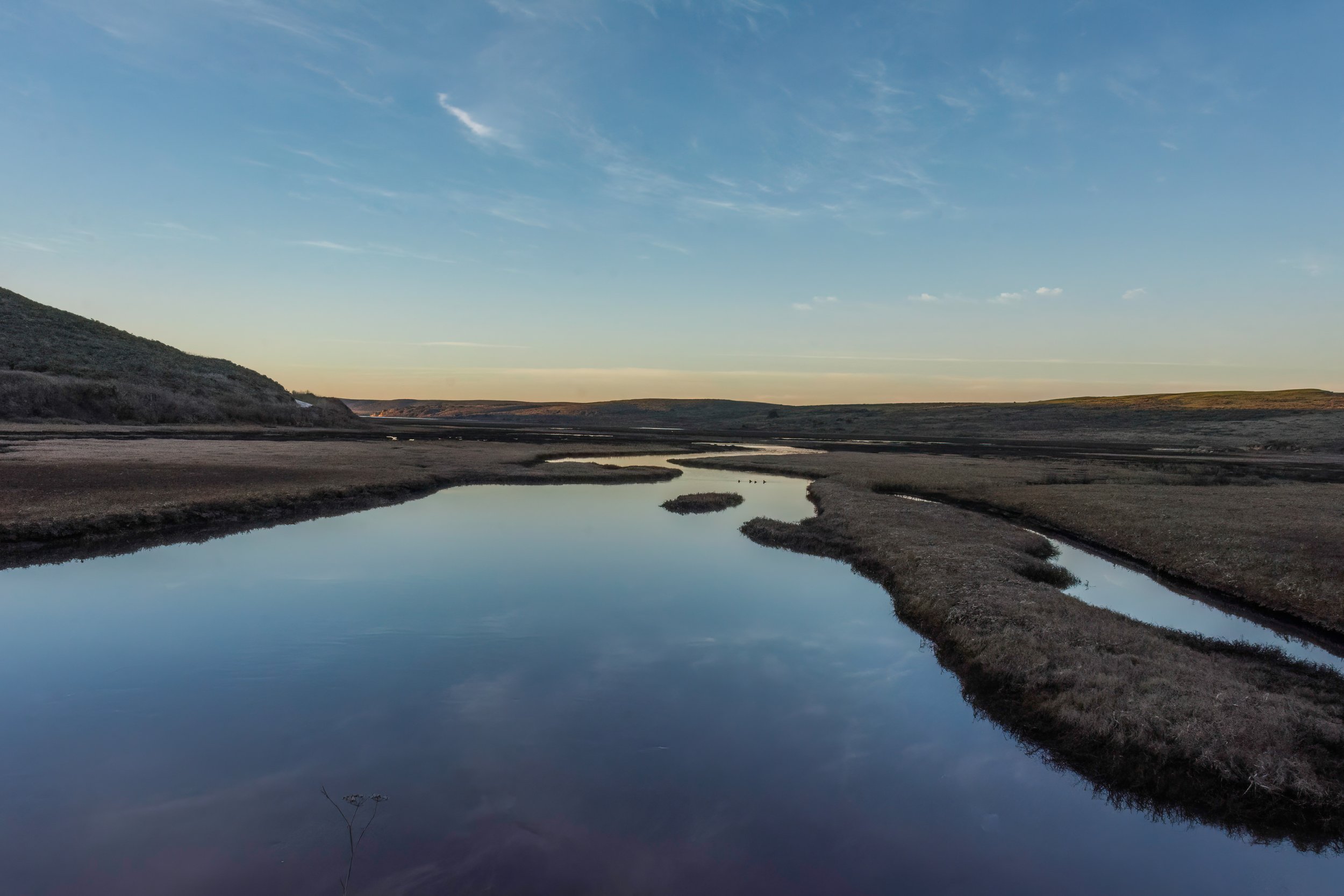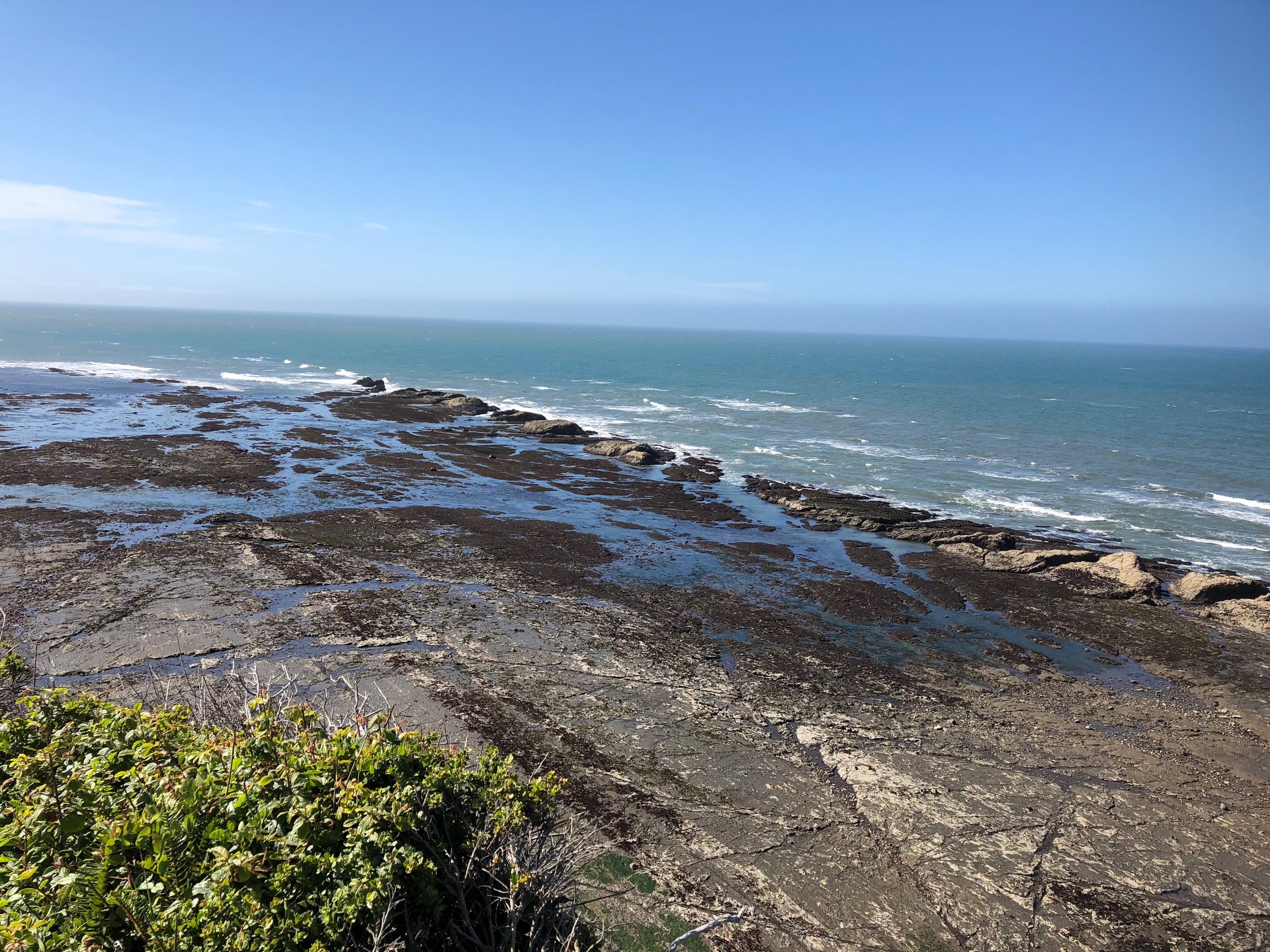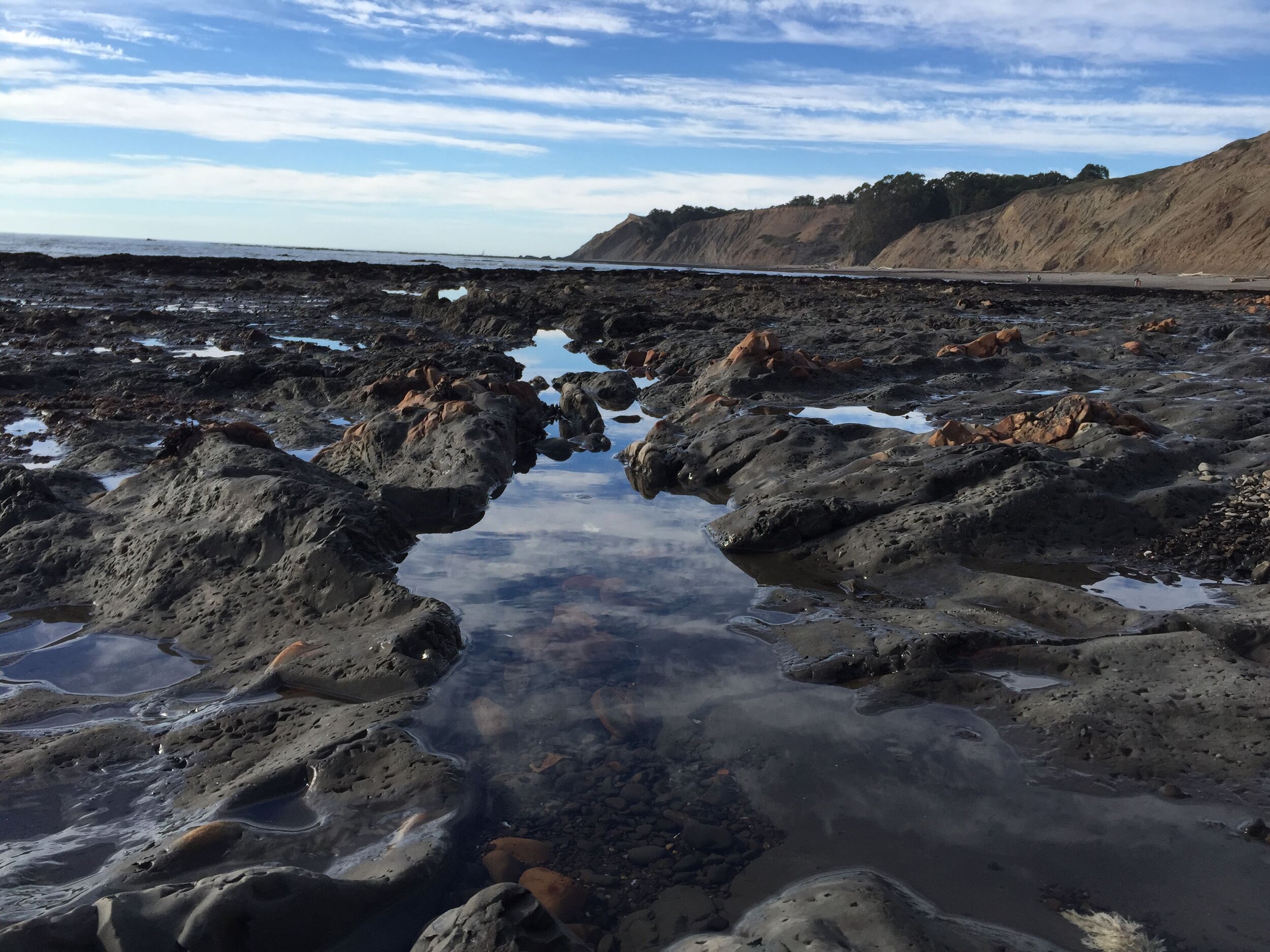It’s been 10 years since California’s network of Marine Protected Areas (MPAs) were established. California’s ambitious plan to establish an interconnected network of 124 MPAs along the coast is an international example of adaptive conservation and management, and we are proud to have been part of the process from the very beginning stages of community meetings. Here in Marin County, we are fortunate to have six MPAs, two State Marine Parks, and three Special Closures at some of our favorite coastal areas like Drakes Estero, Drakes Beach, and Duxbury Reef.
We support California’s network of MPAs by training community scientists, with our Marin MPA Watch program to collect data on how people are utilizing MPAs in partnership with the Point Reyes National Seashore. We also co-chair the Golden Gate MPA Collaborative Network; provide community outreach and education to school groups and the general public with our Duxbury Docent program and pop-up office exhibits; and support legislation and policies that strengthen MPAs with our coastal coalition partners.
Last year, the California MPA network celebrated its 10-year anniversary, and the California Fish and Wildlife Department (CDFW) released the Decadal Management Management Review (DMR) report that provides an analysis and review of the last ten years of management. CDFW, Fish and Game Commission (FGC), and Ocean Protection Council marked the occasion with a number of public events in March to provide information and hear feedback about the DMR. The forum was an opportunity to share the findings and recommendations of the DMR.
In advance of the meeting, we took time to meet with our local partners and prepared comments to submit to the FGC focused on our local MPAs in Marin County to improve conservation goals for unique habitat areas that would benefit from increased protection by flagging MPAs in need of boundary changes and designation changes:
Change Drakes Estero designation to a no-take MPA to align with the 2012 Marine Wilderness status. Since the establishment of the MPA network, Drakes Estero was converted to a National Marine Wilderness in 2012. The California MPA designation needs to be updated from a State Marine Conservation Area (allows the commercial harvest of clams and oysters) to a State Marine Reserve (no consumptive activities, take is prohibited).
Extend Duxbury Reef’s southern boundary to include the entire reef and consider a designation change to a no-take MPA to reduce harmful impacts on the intertidal area. The southern portion of Duxbury Reef at low tide is outside of the MPA which creates confusion on what activities are allowed where. The boundary of the MPA should include the entire portion of the southern reef to protect the interconnected habitat of the intertidal area.
Consider a science-based analysis for a northern extension of the Duxbury Reef State Marine Conservation Area to Stormy Stack Special Closure. When the MPA Network was established, this site had little visitation. Since then, some of the trails have become popular destination points on websites and social media, which has changed the human use landscape to this Area of Special Biological Significance.
We also requested:
Incorporating a review of other state MPAs to determine whether there have been changes in condition or use in the last 10 years that would inform the need to adapt the MPA network to be in alignment with these changed conditions;
Supported pathways to integrate with California’s 30x30 Initiative, climate resilience, and adaptation goals;
Supported increased federally recognized and non-federally recognized tribal coordination and inclusion;
Evaluated the need for transparency in violation tracking and numbers of visits by wardens to specific MPAs;
Requested extending enforcement volunteer programs to rural areas like West Marin;
Requested funding pathways for outreach docent programs that deter poaching and provide critical public education; and
Updated signage to clarify fishing regulations for the general public.
Takeaways from the March Meeting
Following the three days of meetings in March, we have profound gratitude that so many tribal voices from throughout the state participated in the public forums and meetings. We support the steps by CDFW, FGC, and OPC to elevate and include tribal voices in the MPA Network process. We encourage CDFW to partner with both federally and non-federally recognized tribes to incorporate traditional ecological knowledge and create pathways for cultural tribal co-management programs to be created. Our coastline throughout California is biologically and culturally diverse and should meet the needs of all people and cultures in present-day California to protect our coast and ocean.
We also are left with a lack of clarity on the process for designation and boundary changes, whether CDFW is able to directly recommend specific changes based on the findings of the DMR and needs for adaptive management, or if the public must submit a formal petition.
“Thank you to the indigenous commenters and to the Department [CDFW] and Commission for making the space for these important conversations that need to continue. We are supportive of this critical dialogue and the necessary work towards co-management and incorporating traditional ecological knowledge and voices into MPA management. Congratulations on the momentous achievement of this decadal review…. Thank you for your commitment to prioritizing adaptive management and climate-resilient pathways. We want to raise general comments about outreach and the importance of community partnerships…. Docent programs help bridge the gap with communities and create a stewardship relationship…. We look forward to continued participation as we work collectively to adaptively manage our MPAs.”
- Ashley Eagle-Gibbs, EAC Legal and Policy Director, reading EAC public comments at the FGC Marine Resources Committee meeting
The Commissioners were supportive of a science-based framework and holistic approach consistent with the advocacy of EAC and other NGOs, and the Commissioners are committed to preserving our existing MPA network. MPAs work!
April Fish and Game Commission Meeting
On April 20th, we attended the FGC meeting where the Marine Resources Committee Co-chairs reported to the full Commission on the next steps including the development of prioritization and a public comment period before the July 20th Marine Resources Committee meeting. We were pleased to hear verbal comments from Maria Brown, Greater Farallones Superintendent, in support of the review of Duxbury Reef’s boundary and designation status.
What’s Next?
At the close of the March FGC Marine Resources Meeting, the commissioners requested CDFW review the list of recommendations in the DMR that were submitted through public comments at the forums to help prioritize adaptive management pathways for the commissioners to consider in future meetings.
Our next steps include preparing documentation related to the requested boundary and designation changes and clarifying the process related to the need to submit a formal petition. We will be coordinating with local stakeholders and partner NGOs as we prepare for the July 20th Marine Resources Committee meeting.
The July 20th FGCMarine Resources Committee meeting will also be an important meeting where the Commission plans to review CDFW’s prioritization and next steps. We will keep you updated as things progress.
It will be a busy year for MPAs, and you can count on EAC to push for the increased protection of the MPAs we love in Marin County!
Dive Deeper:
Please consider making a special gift to support our work to safeguard our coast and ocean through our MPA advocacy. Program costs include travel, research materials, and personnel costs for community outreach, coalition building, and advocacy at public meetings with estimated 2023 costs of $5,000.


